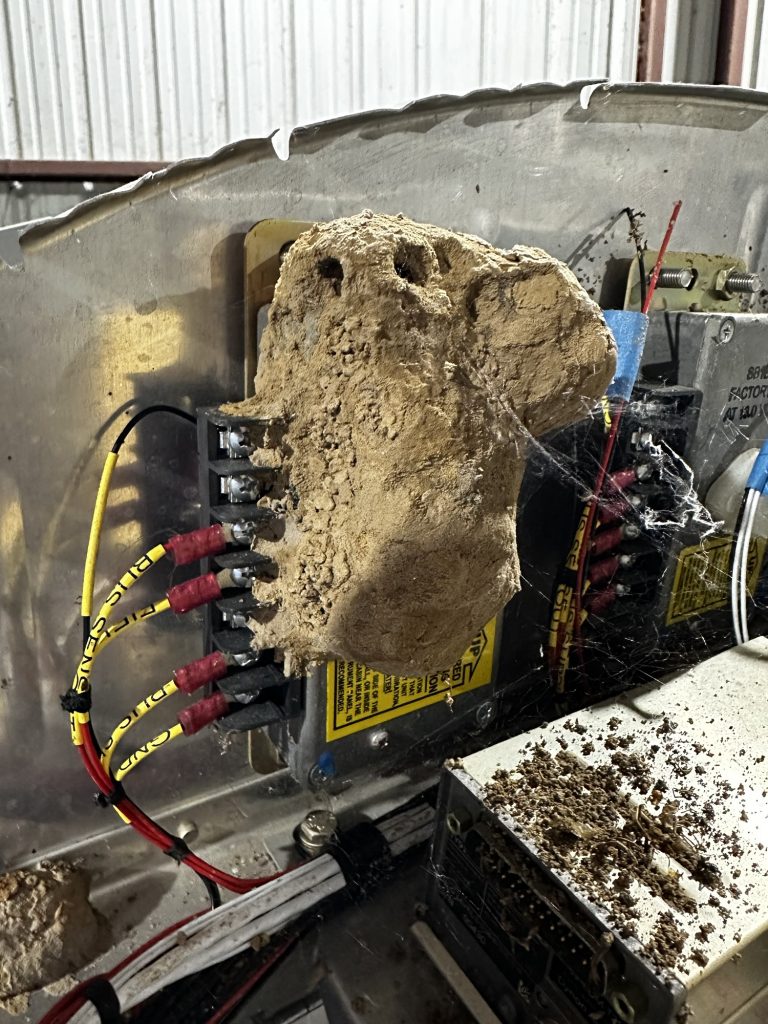Main thrust of the last couple of work sessions was to get that vacuum line for the CPI routed, with the general idea of wrapping up wiring-related stuff in behind the firewall. But before I got to the vacuum line, there was some more lacing to do. I’d briefly considered leaving the wiring run through the forward baggage compartment unlaced, since it’ll eventually be covered by some sort of plastic piece, but it was just too unruly for me.
Good thing I enjoy lacing so much, because it was kind of a pain in this awkward spot. Still rewarding to see things looking so tidy, though:


For the vacuum line itself, I dug out a bulkhead fitting I bought a while back for this specific purpose. After some careful consideration of the surrounding structure, I laid out the firewall hole just below the wiring fitting, drilled the hole, and installed the bulkhead fitting. I also laid out and drilled a larger hole through the forward gear tower wall, and installed a snap bushing for the vacuum line to pass through.
To route the line itself, I dug out some velcro cable ties I had lying around, and just used those to secure the vacuum line alongside the wiring harness. That should keep things tidy, but in a non-permanent way, and won’t leave any sharp zip-tie edges waiting to bite me in the future.
Finally, there was dealing with the line termination at the CPI ECU. Since I have the dual-ECU unit, I also have two vacuum ports, and so a tee fitting is needed. The fitting provided by SDS was kind of bulky, so I ended up positioning it outside the wiring harness, a couple inches away from the ECU, and routing the two stub lines above and below the harness:

In other news, I’ve been doing some thinking regarding FWF wiring routing. Way back when, I’d mocked up putting the amp shunt and main ANL fuse holder on an engine mount tube using Adel clamps. Since then, I’ve decided to add a second ANL fuse for the battery bus feed, plus I still have to mount a current sensor for that bus feed, the battery bus fuse block itself, and the E-bus alt feed relay. I haven’t fully fleshed this idea out yet, but I think I’m going to fab up a mount plate for all that stuff and mount it to the firewall with standoffs, kind of like how I did the battery box mount. Still got to think that one through some more, though, especially what the wire routing will look like.


























